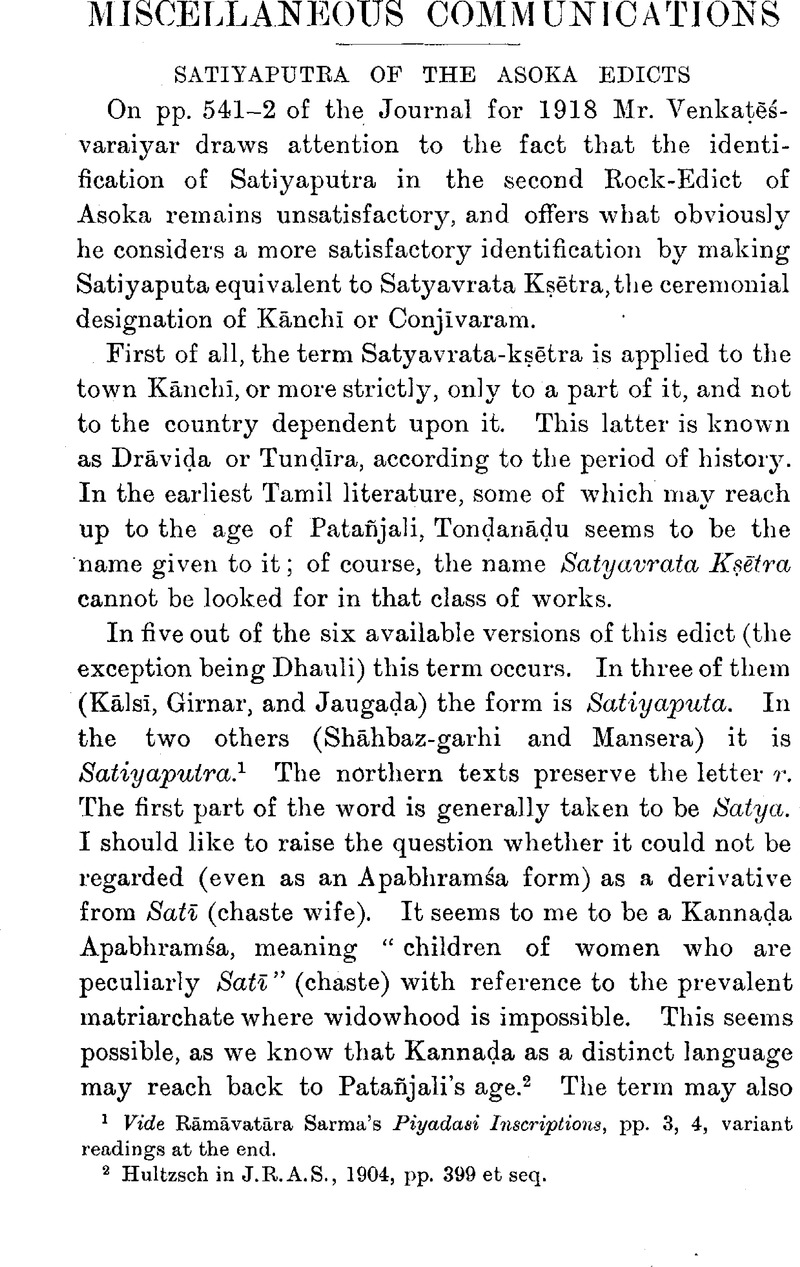No CrossRef data available.
Published online by Cambridge University Press: 15 March 2011

page 581 note 1 Vide Rāmāvatāra Sarma's Piyadasi Inscriptions, pp. 3, 4, variant readings at the end.Google Scholar
page 581 note 2 Hultzsch in J.R.A.S., 1904, pp. 399 et seq.Google Scholar
page 582 note 1 As Kacchi, the capital of the Toṇḍamān Ilandirayan. Perumbāṇāṛṛitppaḍai, i, 420.
page 581 note 2 Vēogaḍam is referred to as belonging to Tirayār in poem 85, and to Toṇdaiyar in poem 281 of the Aham 400.
page 583 note 1 J.B. & O.R.S., iii, 1917, p. 442. The Strīrājya is associated with the Mūṣika country in the Vishnu Purāna (Wilson, iv, p. 221). The southern texts have Trairajya for Strīrājya. Both are referred to as Janapadān, not necessarily republican in constitution. Mr. Jayaswal would equate Satiyaputra with Sātavāhana in note 24. The Mūṣikas were in Travancore in the twelfth century and later.
page 584 note 1 I agree that no substantial reason exists for identifying Satiyaputra with Kāñchi. The Satiyaputras must have adjoined Kerala. I am now convinced that Satiyaputra should be identified wíth the Satyamaṅgalam Tālūk in Coimbatore, as mentioned in my review of The Beginnings of South Indian History, printed in this number. That identification in no way conflicts with the observation of D. R. Bhandarkar that Sātputē “is a surname current among the present Marāthās”. He suggests that the Sātputēs may have emigrated to Mahārāṣṭra from their original seat near the western coast to the south. Satyamaṅgalam adjoins Coorg in the Western Ghāts, and was formerly an important strategical position, with mines of beryl and corundum. See Ind. Ant., vol. xxxiv, p. 250 (1905).—V. A. S.Google Scholar